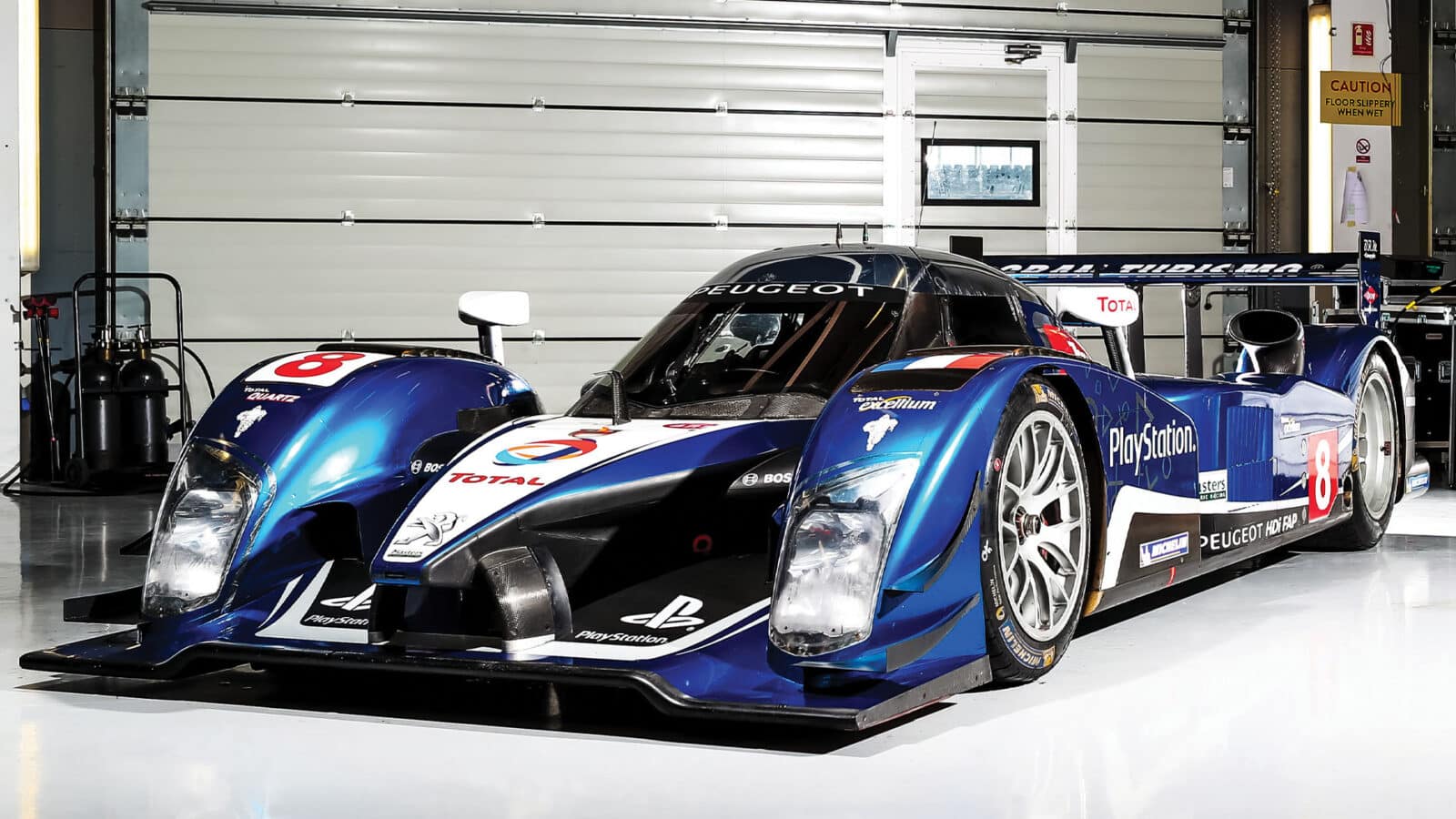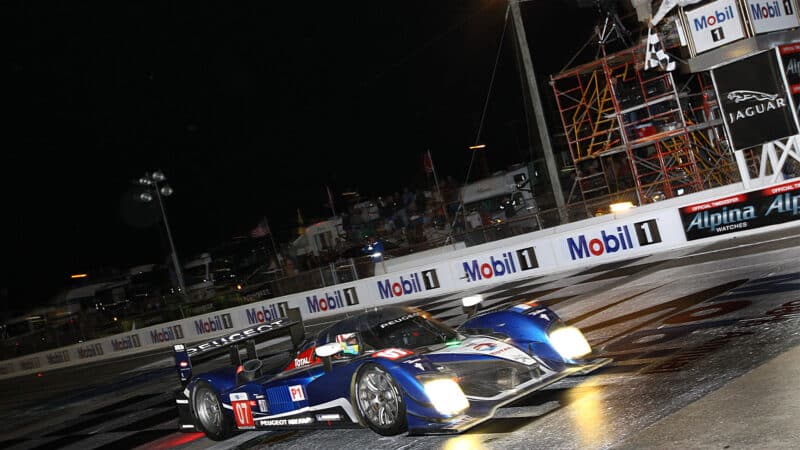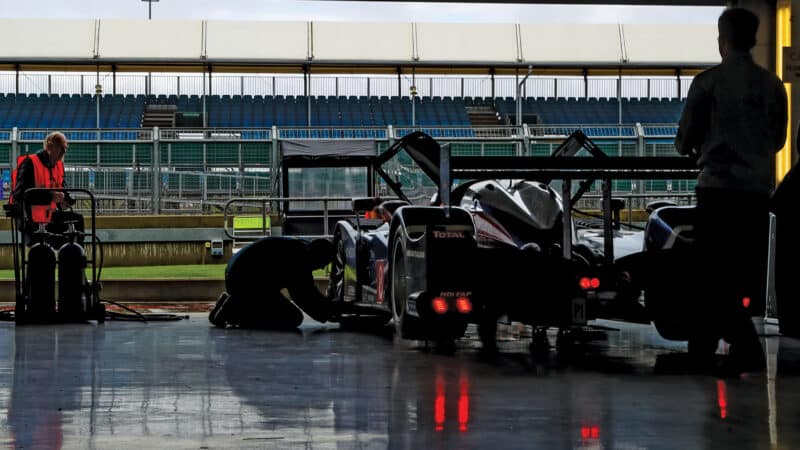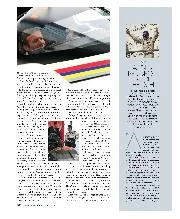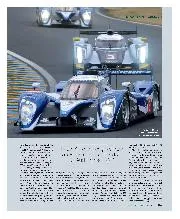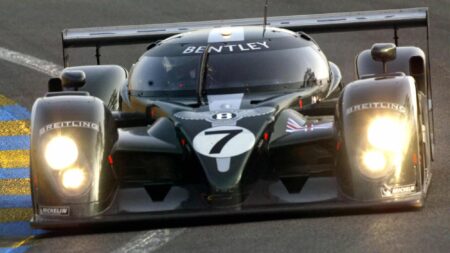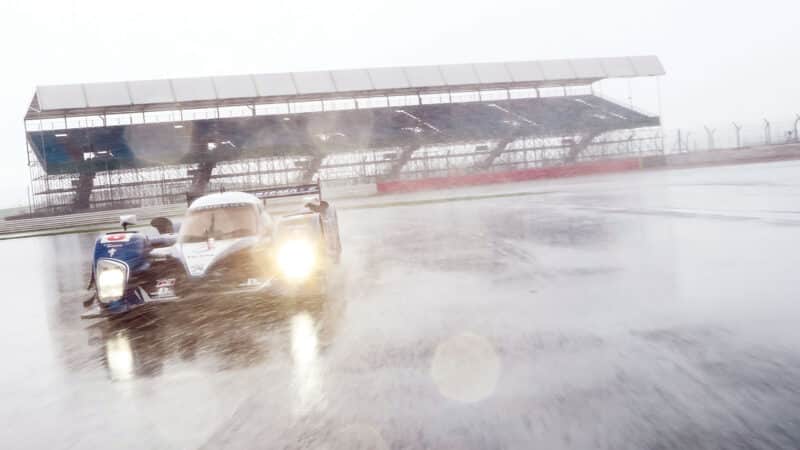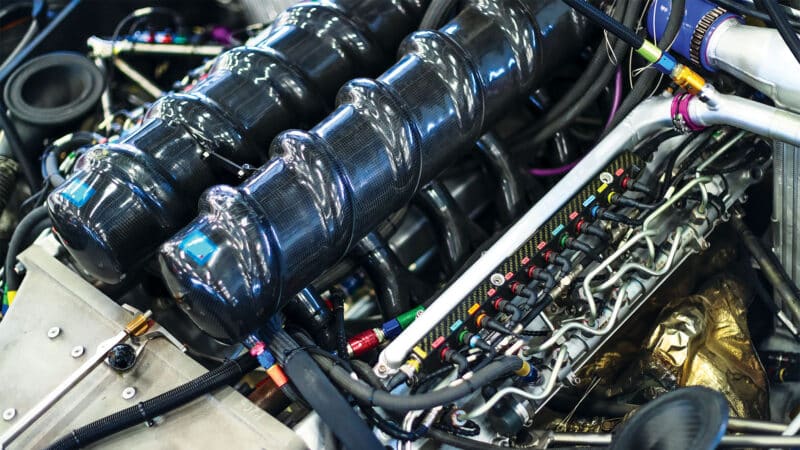The driver line-ups were stellar and included stars from the world of sports car racing and beyond. Formula 1 world champion Jacques Villeneuve was the marque’s big-name signing at the start of the programme in 2007. He would be joined by fellow ex-F1 driver Marc Gené in a roster that included multiple Champ Car title-winner Sébastien Bourdais and established sports car names Stéphane Sarrazin, Nicolas Minassian and Pedro Lamy. Ricardo Zonta, Alex Wurz, David Brabham and Anthony Davidson, all ex-F1 drivers, would subsequently race 908 turbodiesels. This was a no-holds-barred effort.
Given the scale of Peugeot’s effort and ambition, the thought of a private individual buying and then attempting to run and race one of these extraordinary machines seems crazy. Yet here in the garage Chamberlain-Synergy’s crew is quietly working away. There are a laptop or two plugged in, plus a few umbilical lines connected to the engine in order to pre-warm the 5.5-litre bi-turbo V12, but otherwise it’s pretty standard stuff, handled by two mechanics and an engineer.
It’s natural to get hung up and somewhat intimidated by the complexity and sophistication of cars like the 908, but according to Briggs so long as you do all the pre-warming and system checks the big Pug runs like a Swiss watch. Run the engine on a strong, but not qualifying map, and they will last 12,000kms or more. That’s five or more seasons of racing in MEL. And, unlike many of the Group C cars, the level of on-board electronics means even if it does develop a fault the car will flag up most things for the crew, so they don’t spend hours chasing mystery bugs.
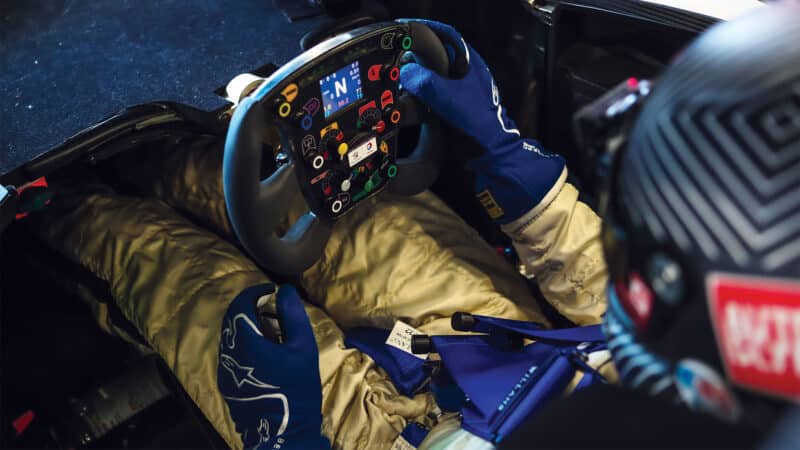
Pug cockpit is a snug fit
Lydon McNeil
While the rain continues to hammer down outside, Berridge talks me through what I can expect, plus a few dos and don’ts. He’d already done me the courtesy of sending me the Peugeot Sport ‘Driver Book’ for the 908 – a 19-page operational manual of intense detail, covering not only the standard procedures, but every possible alarm, display page, recovery modes… My brain begins to ache shortly after absorbing the steering wheel buttons’ basic functions.
Best news to me is that the traction control system is very, very good. I won’t need to be playing around with any of the settings, and if I don’t give them cause to drag me out of the car after my first run the team will give me a meatier engine map, so I can feel a bit more of the big V12 oil burner’s legendary shove. It’s also welcome news that the 908 is pretty much bullet-proof. Then, with classic timing, Berridge beckons me towards him for one final pearl of wisdom: “There’s one vitally important thing I need to add. Don’t bloody crash it!” Gulp.
Peugeot 908: Out on track
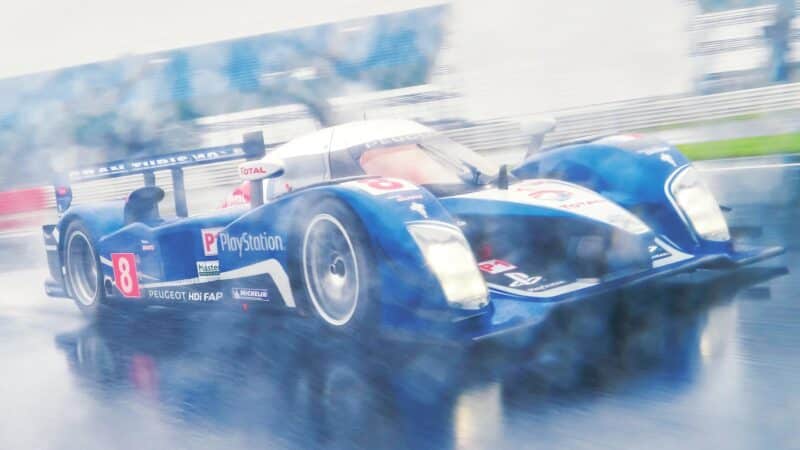
Less than ideal conditions as car takes to the track
Finally, as our closing session of the day approaches, the rain eases then stops. The track’s still wet – very wet in places – but there’s less chance for the flat-bottomed prototype to aquaplane off. My nerves are sparking, but I can’t not take up the opportunity to try this amazing car. Bob gives me the thumbs-up. We’re good to go.
It’s common to refer to modern era Le Mans prototypes as ‘spaceships’ due to their otherworldly looks and performance. Spend some time around one and the analogy only feels more and more appropriate. But it is not until you actually have the opportunity to drive one that the truth of the cliché hits home. This is a super-specialised craft, created to explore a different kind of space and time – that unique pocket of chaos that exists between the start and finish of a 24-hour race.
